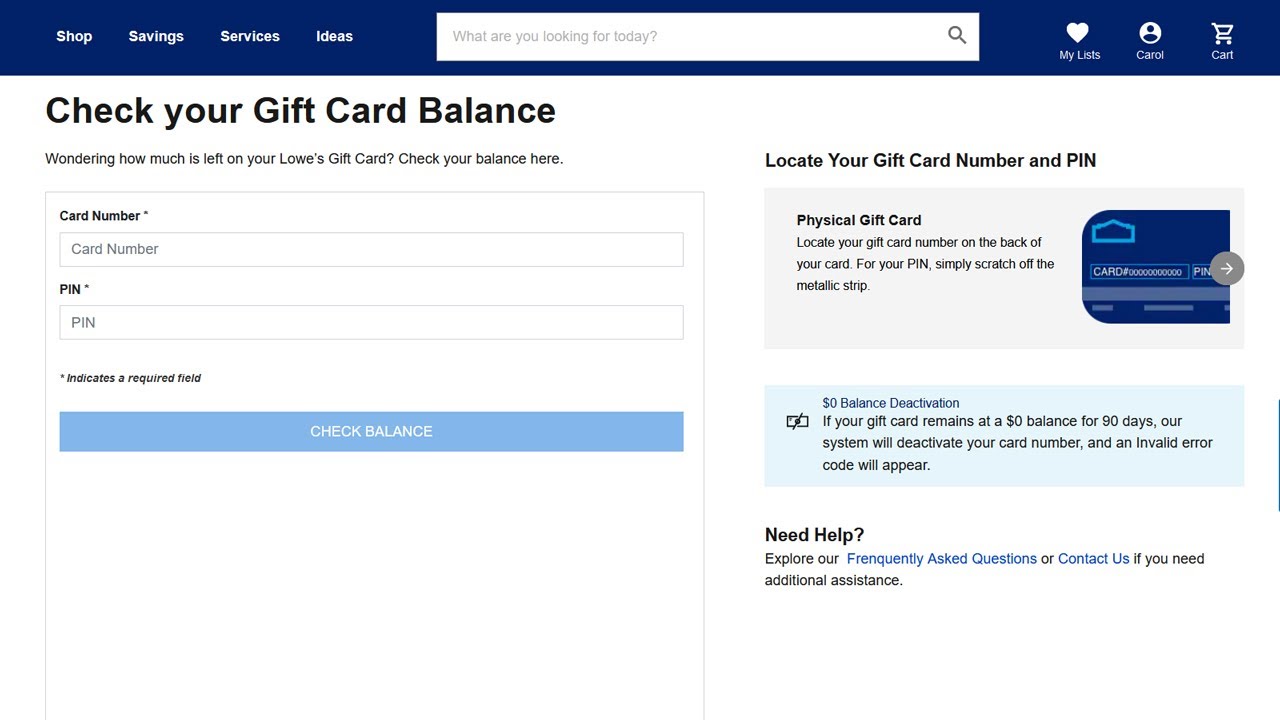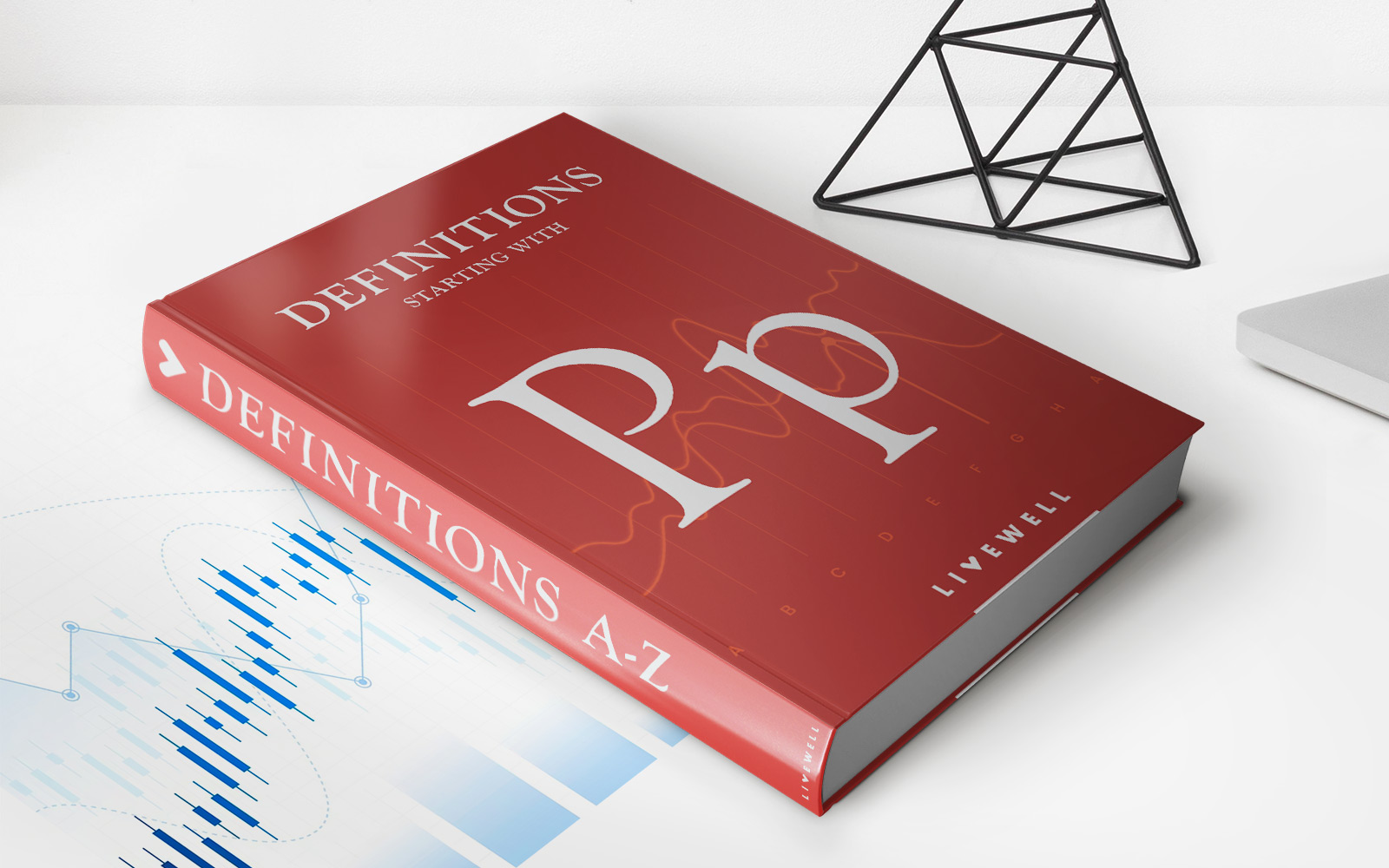

Finance
What Is DPI In Venture Capital
Published: January 21, 2024
Learn all about DPI (Distributions to Paid-in) in the world of venture capital and its significance in finance. Explore the key concepts and factors that influence this important metric.
(Many of the links in this article redirect to a specific reviewed product. Your purchase of these products through affiliate links helps to generate commission for LiveWell, at no extra cost. Learn more)
Table of Contents
Introduction
In the world of venture capital, success is often measured by the returns generated from investments in startup companies. One key metric used to evaluate the performance of a venture capital fund is the DPI, or Distribution to Paid-in capital ratio. DPI serves as a gauge of how much cash a venture capital fund has returned to its investors compared to the amount of capital that has been called or invested.
Understanding DPI is crucial for both venture capital firms and the entrepreneurs seeking funding. It provides valuable insights into the fund’s ability to generate returns and the overall success of its investment strategy. A higher DPI indicates that the venture capital firm has successfully exited its portfolio companies at higher valuations, resulting in substantial returns for its investors.
Additionally, DPI is a critical factor in determining the future fundraising potential of a venture capital firm. Investors often look at the track record of a fund in terms of DPI when deciding whether to commit capital to future funds. A strong DPI track record demonstrates the fund’s ability to generate attractive returns, increasing its chances of attracting new investors.
In this article, we will explore the importance of DPI in venture capital and delve into the process of calculating DPI. We will also examine the factors that can affect the DPI of a venture capital fund and provide case studies of both high and low DPI ventures to illustrate its significance. By the end of this article, you will have a comprehensive understanding of DPI and its relevance in the realm of venture capital.
Definition of DPI
The Distribution to Paid-in capital ratio, or DPI, is a measure used in venture capital to evaluate the performance of a fund by analyzing the amount of cash distributed to investors relative to the amount of capital invested in the fund. It is a key metric that indicates the fund’s ability to generate returns and provide liquidity to its limited partners.
DPI is calculated by dividing the total cash distributed to limited partners, including proceeds from exits and any ongoing distributions, by the total amount of capital called or invested by the limited partners. The resulting ratio represents the percentage of capital that has been returned.
For example, if a venture capital fund has distributed $50 million in cash to its limited partners and the total capital invested by the limited partners is $100 million, the DPI would be 0.5, indicating that 50% of the capital has been returned to investors.
DPI is typically expressed as a multiple, representing how many times the capital has been returned. For instance, a DPI of 2 means that the fund has returned double the amount of capital invested.
It’s worth noting that DPI reflects the actual cash distributed and not the current value of the remaining holdings in the fund. It focuses on the exit events and the liquidity achieved, providing an objective measure of the fund’s performance in generating returns for its investors.
DPI is often used in conjunction with other metrics, such as Total Value to Paid-in capital (TVPI) and Internal Rate of Return (IRR), to provide a comprehensive assessment of a venture capital fund’s performance. By examining these metrics collectively, investors can gain a deeper understanding of the fund’s ability to generate attractive returns and make informed investment decisions.
Importance of DPI in Venture Capital
The Distribution to Paid-in capital ratio (DPI) is a vital metric in the world of venture capital as it holds significant importance for both venture capital firms and their limited partners. Let’s explore the key reasons why DPI is crucial in evaluating the performance of venture capital investments:
- Performance Measurement: DPI serves as a key performance indicator that allows venture capital firms to assess the success of their investment strategy. A high DPI indicates that the fund has successfully exited its portfolio companies at favorable valuations, generating substantial returns for investors. It showcases the fund’s ability to identify promising startups and execute profitable exit strategies.
- Investor Confidence: DPI plays a crucial role in attracting new investors to venture capital funds. Limited partners consider DPI as a measure of the fund’s track record and ability to generate returns. A strong DPI track record increases investor confidence in the fund’s ability to deliver attractive returns, making it more likely for new investors to commit capital to future funds.
- Capital Recycling: High DPI allows venture capital firms to recycle capital more efficiently. As portfolio companies are exited and cash is distributed to investors, venture capital firms can reinvest those funds into new promising startups, continuing the cycle of capital deployment and potential returns. A higher DPI enables the fund to have more available capital for new investments, increasing the potential for future successes.
- Fundraising Potential: DPI also plays a significant role in determining the fundraising potential of venture capital firms. Future investors evaluate the DPI track record when deciding whether to invest in a particular fund. A proven track record of generating attractive DPI ratios can make a fund more appealing to potential investors, increasing its chances of successful fundraising.
- Exit Strategy Assessment: DPI provides insights into the effectiveness of a venture capital firm’s exit strategies. A high DPI suggests that the fund has successfully exited investments through avenues like IPOs or acquisitions, resulting in significant returns. This information is valuable for entrepreneurs seeking venture capital funding as it demonstrates the fund’s ability to provide a successful exit for their startup.
DPI, along with other performance metrics like Total Value to Paid-in capital (TVPI) and Internal Rate of Return (IRR), provides a holistic view of a venture capital fund’s performance and its ability to generate returns. By considering DPI as an essential factor, venture capital firms can effectively evaluate their performance and attract new investors, while limited partners can assess the potential profitability of their venture capital investments.
Calculating DPI
Calculating the Distribution to Paid-in capital ratio (DPI) involves determining the amount of cash distributed to investors relative to the total capital invested in a venture capital fund. The calculation for DPI is relatively straightforward and can be performed using the following formula:
DPI = Total Cash Distributed / Total Capital Invested
To calculate DPI, you need to gather two key pieces of information:
- Total Cash Distributed: This refers to the total amount of cash that has been distributed to the limited partners of the venture capital fund. It includes proceeds from exits and any ongoing distributions or dividends.
- Total Capital Invested: This represents the total amount of capital that has been invested or committed by the limited partners in the fund. It includes both the initial investment and any subsequent capital calls made by the fund.
Once you have collected the necessary data, you can calculate the DPI by dividing the total cash distributed by the total capital invested. The resulting ratio will indicate the percentage or multiple of capital that has been returned to investors.
For example, let’s say a venture capital fund has distributed $50 million in cash to its limited partners, and the total capital invested by the limited partners is $100 million. The DPI would be 0.5, indicating that the fund has returned 50% of the invested capital.
DPI is often expressed as a multiple, which represents how many times the capital has been returned. Using the example above, if the fund had a DPI of 2, it would mean that the fund has returned double the amount of capital invested.
It’s important to note that DPI focuses on the actual cash distributed to investors and not the current value of the remaining holdings in the fund. This measure provides a tangible reflection of the fund’s ability to generate returns and deliver liquidity to its limited partners.
By regularly calculating DPI and monitoring its trend over time, venture capital firms can gain insights into the success of their investment strategy and make informed decisions regarding future investments and fundraising opportunities.
Factors Affecting DPI
The Distribution to Paid-in capital ratio (DPI) in venture capital can be influenced by various factors. Understanding these factors can shed light on the performance and potential returns of a venture capital fund. Let’s explore some key factors that can affect DPI:
- Exit Valuations: The valuations at which portfolio companies are exited significantly impact DPI. Higher exit valuations result in larger cash distributions to limited partners, leading to a higher DPI. On the other hand, lower exit valuations can result in lower cash distributions and, consequently, a lower DPI.
- Timing of Exits: The timing of exits can have a significant impact on DPI. Exiting companies at favorable market conditions and when they have reached their growth potential can generate higher valuations and, consequently, higher cash distributions. However, exiting during a market downturn or before a company has achieved its full potential can lead to lower valuations and lower DPI.
- Portfolio Performance: The success or failure of individual investments in the portfolio plays a crucial role in determining DPI. A portfolio with a higher number of successful exits and strong-performing companies will likely have a higher DPI. Conversely, a portfolio with underperforming or failed investments may have a lower DPI as the returns generated from successful exits are offset.
- Investment Strategy: The investment strategy of the venture capital fund can impact DPI. Funds focused on early-stage investments may have a longer time horizon for exits, which can delay cash distributions and lower the DPI in the short term. Conversely, funds that specialize in later-stage investments or have a more aggressive exit strategy may have the potential for quicker and higher cash distributions, leading to a higher DPI.
- Portfolio Diversification: The diversification of the investment portfolio can also influence DPI. A well-diversified portfolio spread across different industries and stages of startups can mitigate risks and increase the likelihood of having successful exits. A more diversified portfolio with multiple successful exits can contribute to a higher DPI.
It’s important to note that these factors are interrelated and can impact each other. For example, a strong investment strategy combined with favorable market conditions can lead to higher exit valuations and, consequently, a higher DPI. Conversely, poor portfolio performance or unfavorable market conditions can lower DPI, regardless of the investment strategy.
Understanding the factors that influence DPI allows venture capital firms to assess and potentially optimize their investment decisions, portfolio management, and exit strategies. By carefully considering these factors and monitoring DPI over time, venture capital firms can make informed adjustments to their investment approach to generate attractive returns for their investors.
Case Studies: High DPI Ventures
Examining case studies of high Distribution to Paid-in capital ratio (DPI) ventures provides insights into the factors that contribute to their success and their ability to generate attractive returns for investors. Here are a few noteworthy examples:
1. A Tech Startup with Strategic Acquisitions:
This venture capital-backed tech startup had a clear strategy of acquiring smaller companies that complemented its core business. By strategically integrating these acquisitions, the company experienced rapid growth and attracted interest from larger industry players. After a few years, the startup was acquired by a major tech company, resulting in a significant cash distribution to the limited partners. The high DPI was a result of the successful execution of the acquisition strategy and the ability to position the company for a lucrative exit.
2. A Biotech Firm’s Successful Drug Development:
This venture capital-funded biotech company achieved a groundbreaking scientific breakthrough in the development of a new drug to treat a widespread disease. The successful completion of clinical trials and the subsequent approval from regulatory authorities led to the company being acquired by a pharmaceutical giant. The cash distribution from the acquisition generated a high DPI for the investors. The key drivers of the high DPI in this case were the company’s innovative technology, effective clinical trial results, and the market demand for the drug.
3. A Fintech Enterprise’s IPO Success:
This venture capital-backed fintech startup experienced exponential growth due to its disruptive product offering and the demand for digital financial services. The company successfully went public through an Initial Public Offering (IPO), resulting in a substantial cash distribution to investors. The high DPI was a result of the company’s ability to tap into a growing market, establish a strong brand, and execute a successful public listing.
These case studies highlight key factors contributing to high DPI, including a well-executed acquisition strategy, groundbreaking scientific advancements, disruptive technology, successful IPOs, and attracting acquisition interest from larger industry players. It is important to note that these success stories are the result of a combination of factors, including effective management, market demand, timing, and a little bit of luck. Each venture’s path to a high DPI may vary depending on the industry, market conditions, and the specific strategies employed.
Analyzing these high DPI ventures can serve as valuable lessons for venture capital firms and entrepreneurs seeking funding. It underscores the importance of developing a clear and strategic approach, identifying growth opportunities, executing well-defined business plans, and capitalizing on favorable market conditions to maximize returns and generate a high DPI.
Case Studies: Low DPI Ventures
Understanding case studies of ventures with low Distribution to Paid-in capital ratio (DPI) provides insight into the challenges and factors that can lead to lower returns for investors. Let’s examine a few examples of ventures with low DPI:
1. A Consumer Electronics Startup with Market Challenges:
This venture capital-backed consumer electronics startup faced intense competition and struggled to gain market traction. Despite innovative product design and strong initial sales, the company faced difficulties in scaling production and expanding distribution networks. As a result, they failed to achieve significant market share and struggled to generate the required cash flows for proper scaling. The low DPI in this case reflects the challenges faced by the company in meeting market demands and achieving sustainable growth.
2. A Software-as-a-Service (SaaS) Company with High Customer Churn:
This venture capital-funded SaaS company experienced high customer churn due to issues with product usability and customer satisfaction. The company struggled to retain customers and failed to generate consistent and predictable revenue streams. Despite efforts to improve their product and customer experience, the company faced significant customer attrition, resulting in lower revenues and limited cash distributions to investors. The low DPI in this case highlights the importance of addressing customer retention challenges in the SaaS industry.
3. A Biotech Firm’s Unsuccessful Clinical Trial:
This venture capital-supported biotech firm invested heavily in the research and development of a promising drug. However, the drug failed to meet the desired efficacy and safety standards during clinical trials. As a result, the company was unable to secure regulatory approval and had to halt further development. The failure of the clinical trial significantly affected the prospects of generating returns for investors, resulting in a low DPI.
These case studies illustrate various factors that can contribute to low DPI, such as market challenges, product viability, customer retention issues, and unsuccessful research and development efforts. It’s important to recognize that venture capital investments inherently carry risks, and not all ventures will yield high returns or achieve a favorable DPI.
By analyzing the reasons behind low DPI ventures, venture capital firms can learn valuable lessons about the importance of thorough market evaluation, product-market fit, customer retention strategies, and successful execution of research and development efforts. Mitigating risks, addressing challenges, and adapting strategies along the way can increase the chances of achieving higher DPI in future ventures and maximizing returns for investors.
Conclusion
The Distribution to Paid-in capital ratio (DPI) is a critical metric in venture capital that measures the cash distributed to investors relative to the capital invested. DPI serves as a key performance indicator, allowing venture capital firms to assess their success in generating returns and attracting new investors. It provides valuable insights into the fund’s ability to identify promising startups, execute successful exit strategies, and deliver liquidity to investors.
Throughout this article, we explored the definition of DPI and its significance in the world of venture capital. We discussed how DPI is calculated by dividing the total cash distributed to investors by the total capital invested. We also examined the importance of DPI, including its role in performance measurement, investor confidence, capital recycling, fundraising potential, and exit strategy assessment.
Furthermore, we explored the factors that can influence DPI, such as exit valuations, timing of exits, portfolio performance, investment strategy, and portfolio diversification. Understanding these factors allows venture capital firms to make informed decisions and optimize their investment approach to maximize returns for their investors.
Additionally, we analyzed case studies of both high DPI ventures and low DPI ventures. These case studies highlighted the factors that contributed to their respective levels of DPI, providing valuable insights and lessons for venture capital firms and entrepreneurs seeking funding. Whether it was a successful acquisition strategy, groundbreaking technological advancements, or market challenges, these case studies showcased the impact of various factors on DPI outcomes.
In conclusion, DPI is a crucial metric in venture capital that provides valuable insights into the success and performance of a fund. By carefully monitoring DPI and understanding the factors that can affect it, venture capital firms and entrepreneurs can make informed investment decisions, optimize strategies, and strive for higher returns. With a robust understanding of DPI, they can navigate the ever-evolving landscape of venture capital and work towards generating attractive returns for all stakeholders involved.














